- Selecting the Right Varieties
- Starting Seeds Indoors
- 1. Gather your supplies
- 2. Choose the right seeds
- 3. Prepare the seed trays
- 4. Plant the seeds
- 5. Provide the right conditions
- 6. Transplanting
- 7. Additional tips
- Providing Adequate Light and Heat
- 1. Location
- 2. Temperature
- 3. Mulching
- 4. Protective Covers
- 5. Heat Mats
- Providing Proper Nutrients and Watering
- 1. Fertilizing
- 2. Mulching
- 3. Watering
- 4. Drip Irrigation
- 5. Compost Tea
- Protecting against Pests and Diseases
- 1. Crop rotation
- 2. Companion planting
- 3. Regular inspection
- 4. Natural pest control
- 5. Proper watering and fertilization
- Implementing Companion Planting
- 1. Planting herbs
- 2. Interplanting with flowers
- 3. Using companion plants as pest repellents
- 4. Companion plants for shade
- 5. Crop rotation
- Applying Mulch and Regularly Weeding
- Applying Mulch
- Regularly Weeding
- Harvesting at the Right Time
- “Question-Answer”
- What are some tips for speeding up the courgette harvest?
- How can starting seeds indoors help speed up the courgette harvest?
- Why is black plastic mulch useful for speeding up the courgette harvest?
- What is the role of row covers in speeding up the courgette harvest?
- How can organic fertilizers help speed up the courgette harvest?
- “Video” This Technique of Starting Seeds Will Change Your Life
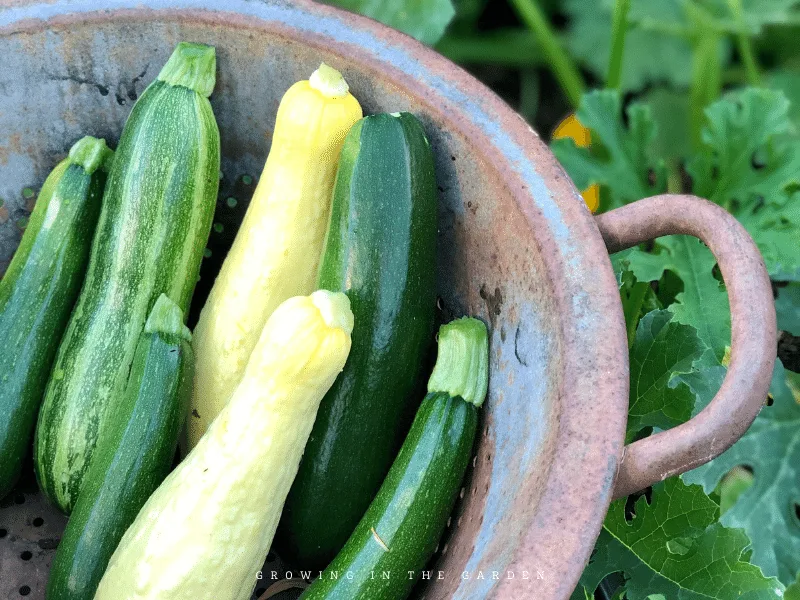
Growing courgettes can be a rewarding and delicious venture, but sometimes it can feel like the harvest takes forever to arrive. Fortunately, there are several methods you can use to speed up the courgette harvest and enjoy your homegrown vegetables sooner. By implementing these techniques, you can gain a month’s head start and have fresh courgettes on your plate in no time.
1. Start the seeds indoors
One of the easiest ways to speed up the courgette harvest is to start the seeds indoors. By starting the seeds in trays or pots under controlled conditions, you can give them a head start before transplanting them into the garden. This way, the plants will already be well-established and can start producing fruits earlier.
2. Use cloches or row covers
Cloches or row covers are protective structures that help create a microclimate for the plants, allowing them to grow faster and produce earlier. By placing cloches or row covers over your courgette plants, you can create a warmer environment, protect the plants from cold temperatures, and promote faster growth. Just be sure to remove them once the plants start flowering to allow for pollination.
3. Choose early-maturing varieties
When selecting courgette varieties to plant, opt for early-maturing varieties that are specifically bred for faster growth and earlier fruit production. These varieties are typically labeled as “early” or “early-maturing” and can give you a significant time advantage in terms of harvesting.
4. Provide ample sunlight and warmth
Courgettes thrive in warm and sunny conditions. To speed up their growth, make sure they receive at least 6-8 hours of direct sunlight each day. You can also enhance warmth by using black plastic mulch or reflective mulch around the plants, which will absorb and radiate additional heat.
5. Regularly water and feed the plants
Courgette plants require consistent moisture and nutrients to grow quickly and produce abundant fruits. Water the plants regularly, aiming for the soil to be consistently moist, but not waterlogged. Additionally, fertilize the plants with a balanced organic fertilizer once every two weeks to provide them with the necessary nutrients for faster growth and fruit development.
By employing these methods, you can give your courgettes a head start, ensuring an early and bountiful harvest. Whether you’re looking to enjoy them fresh, freeze them for later use, or share them with friends and neighbors, these tips will help you have a successful and productive courgette growing season.
Selecting the Right Varieties
When it comes to growing courgettes, selecting the right variety is key to ensuring a successful and productive harvest. There are several factors to consider when choosing which courgette varieties to grow in your garden:
Growing Space: Different courgette varieties have different growth habits. Some varieties are compact and bushy, making them ideal for small gardens or containers. Other varieties are more sprawling and require more space to grow.
Climate: Consider the climate of your region when selecting courgette varieties. Some varieties are better suited to cooler climates, while others thrive in warmer regions. Choose varieties that are known to perform well in your specific climate.
Harvest Time: Courgettes come in different sizes and shapes, and their harvesting time can vary. Some varieties produce courgettes that are best harvested when they are small and tender, while others are better suited for larger, mature fruits. Consider how you plan to use your courgettes and select varieties that align with your preferred harvest time.
Taste and Texture: Different varieties of courgettes can have slightly different flavors and textures. Some are more sweet and nutty, while others are more mild and crisp. Consider what taste and texture profile you prefer in your courgettes and choose varieties that align with your preferences.
Disease Resistance: Courgette plants can be susceptible to various diseases, such as powdery mildew and downy mildew. When selecting courgette varieties, look for ones that are bred for disease resistance. This will help ensure that your plants stay healthy and productive throughout the growing season.
By considering these factors and selecting the right courgette varieties for your garden, you’ll be setting yourself up for a bountiful and successful harvest of this versatile vegetable.
Starting Seeds Indoors
Starting seeds indoors is a great way to get a head start on your courgette harvest. By starting seeds indoors, you can control the growing conditions and ensure that your plants are off to a healthy start. Here are some tips for starting seeds indoors:
1. Gather your supplies
Before you start, gather all the necessary supplies. You will need seed trays, pots or containers, seed starting mix, seeds, water, and a light source. Make sure that the trays or pots have drainage holes to allow excess water to escape.
2. Choose the right seeds
Choose high-quality courgette seeds that are suited for indoor starting. Look for seeds that are specifically labeled for indoor sowing or early planting. Select a variety that has a shorter maturity time to ensure that you can harvest your courgettes earlier.
3. Prepare the seed trays
Fill your seed trays or pots with a seed starting mix, which is a light and airy soilless mix that provides good drainage. Moisten the mix with water before planting the seeds. Follow the package instructions for seed spacing and depth.
4. Plant the seeds
Place one or two seeds in each cell or pot, following the recommended spacing. Cover the seeds with a layer of seed starting mix or vermiculite. Label each tray or pot with the plant variety and planting date.
5. Provide the right conditions
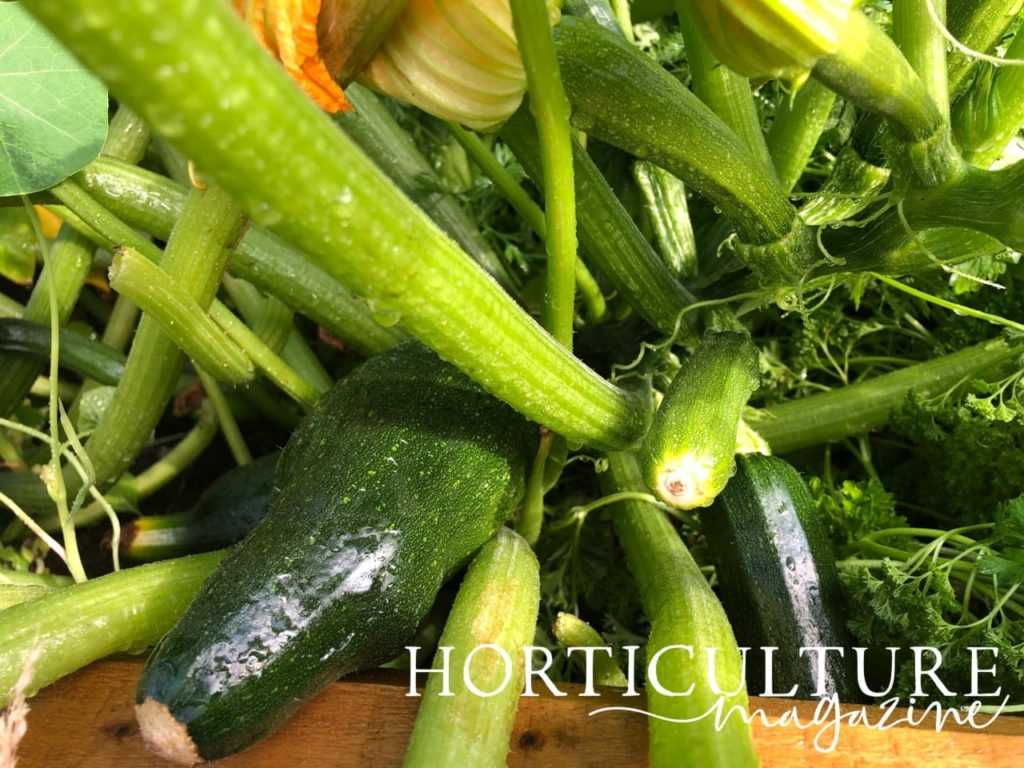

Place the seed trays in a warm and brightly lit location, such as a sunny window or under grow lights. Keep the temperature around 21-24°C (70-75°F) for optimal germination. Make sure to water the seeds regularly, keeping the soil moist but not soggy.
6. Transplanting
Once the seedlings have developed their second set of true leaves, they are ready to be transplanted into larger pots or containers. Harden off the seedlings by gradually exposing them to outdoor conditions before planting them in the garden.
7. Additional tips
- Use a heating mat to speed up germination.
- Thin out the seedlings if they are crowded to prevent competition for resources.
- Fertilize the seedlings with a balanced liquid fertilizer once they have developed their first true leaves.
- Monitor for pests and diseases and take appropriate action if necessary.
By starting your courgette seeds indoors, you can get a head start on the growing season and enjoy an earlier harvest. Follow these tips and enjoy an abundance of homegrown courgettes!
Providing Adequate Light and Heat
When it comes to speeding up the courgette harvest, providing adequate light and heat is essential. Courgette plants thrive in warm and sunny conditions, so it’s important to create the optimal environment for them to grow and produce fruit.
1. Location
Choose a location for your courgette plants that receives full sun for at least six to eight hours a day. This will ensure they get the maximum amount of light and heat necessary for their growth. Avoid planting them in shaded areas as this can slow down their development.
2. Temperature
Courgette plants prefer temperatures between 18-24°C (65-75°F). If you live in a colder climate, consider starting your courgette plants indoors in pots or trays. This will give them a head start and allow you to control the temperature until it’s warm enough to transplant them outside.
3. Mulching
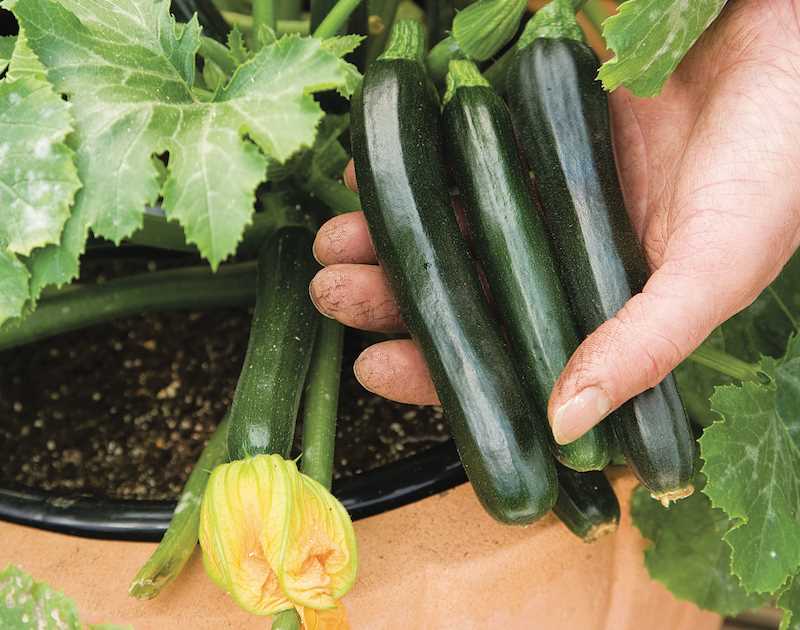

Applying a layer of mulch around your courgette plants can help retain heat in the soil and keep the roots warm. Use organic mulch like straw or wood chips and spread it around the base of the plants. This will also help conserve moisture and suppress weed growth.
4. Protective Covers
If you’re expecting a cold spell or frost, consider using protective covers like cloches or row covers to shield your courgette plants. These covers act as mini greenhouses, trapping heat and protecting the plants from the cold. Remember to remove the covers during the day when the temperature rises to prevent overheating.
5. Heat Mats
If you’re growing your courgette plants indoors, using heat mats can provide them with the warmth they need to germinate and grow. Place the heat mat under the pots or trays to create a warm environment for the seeds to sprout. Once the seedlings have emerged, you can remove the heat mat and continue providing them with adequate light.
By following these tips and ensuring your courgette plants receive adequate light and heat, you can speed up their growth and enjoy an early harvest. Remember to monitor the temperature and adjust the growing conditions accordingly to provide the ideal environment for your plants.
Providing Proper Nutrients and Watering
Proper nutrition and watering are essential for a healthy and productive courgette harvest. Here are some tips to ensure that your plants are well-fed and watered:
1. Fertilizing
Fertilize your courgette plants regularly with a balanced organic fertilizer. This will provide them with the necessary nutrients for healthy growth and abundant fruit production. Apply the fertilizer according to the package instructions, taking care not to overdo it.
2. Mulching
Apply a layer of organic mulch around the base of your courgette plants to help retain moisture in the soil and suppress weeds. This will help to conserve water and reduce the frequency of watering.
3. Watering
Water your courgette plants regularly, aiming for deep and consistent watering. Courgettes require about 1-2 inches of water per week, so monitor the soil moisture and adjust your watering schedule accordingly. Avoid overwatering, as this can lead to root rot. Water the plants at the base to keep the leaves dry and prevent diseases.
4. Drip Irrigation
Consider installing a drip irrigation system for optimal water efficiency. Drip irrigation delivers water directly to the plants’ root zones, minimizing water loss from evaporation and ensuring that the plants receive a steady supply of moisture.
5. Compost Tea
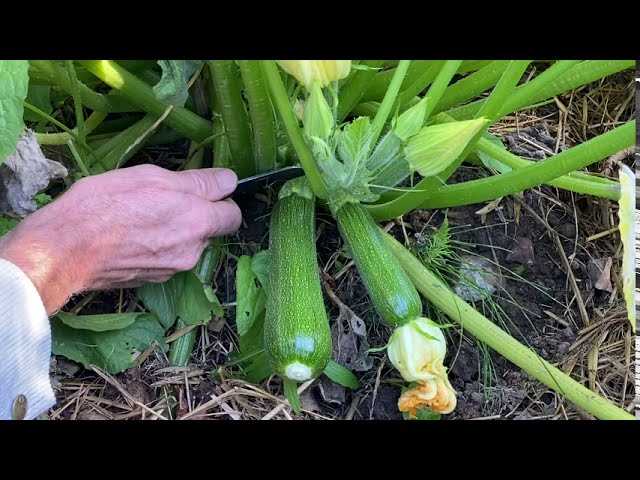

Occasionally, you can give your courgette plants a boost by applying compost tea. This nutrient-rich liquid can be made by steeping compost in water and then straining it. Apply the compost tea to the soil around the base of the plants, providing them with a natural source of nutrients.
By providing your courgette plants with the proper nutrients and watering, you can ensure their overall health and maximize your harvest. Remember to monitor the soil moisture regularly and adjust your care routine as needed.
Protecting against Pests and Diseases
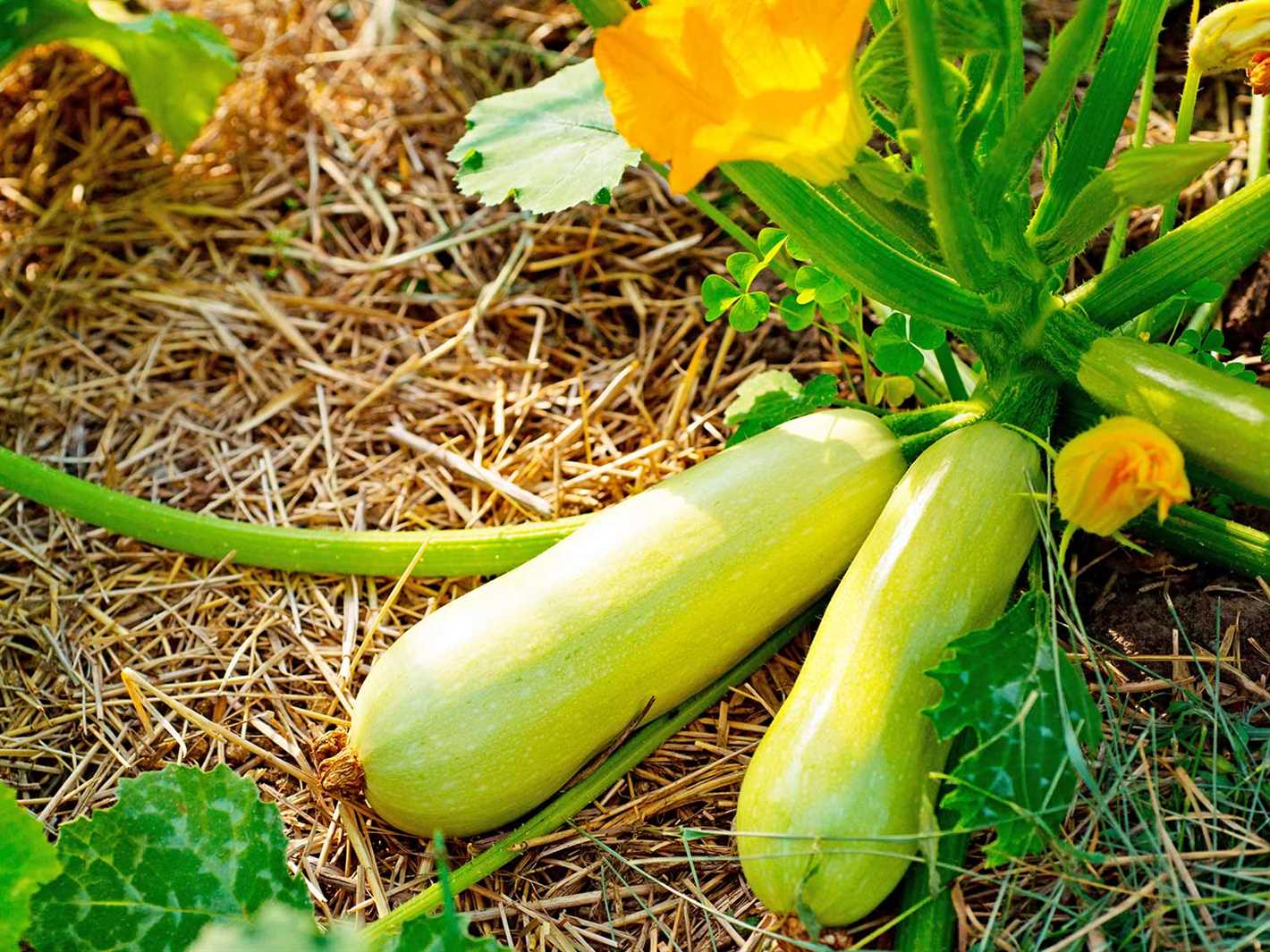

As with any garden crop, courgettes are susceptible to pests and diseases that can damage or kill the plants. Taking preventive measures to protect your courgette plants is essential for a successful harvest. Here are some methods to consider:
1. Crop rotation
Crop rotation is a technique that involves planting different crops from year to year in order to prevent the buildup of pests and diseases. Avoid planting courgettes in the same spot each year to reduce the risk of recurring problems. Instead, rotate with plants from other families, such as tomatoes or beans.
2. Companion planting
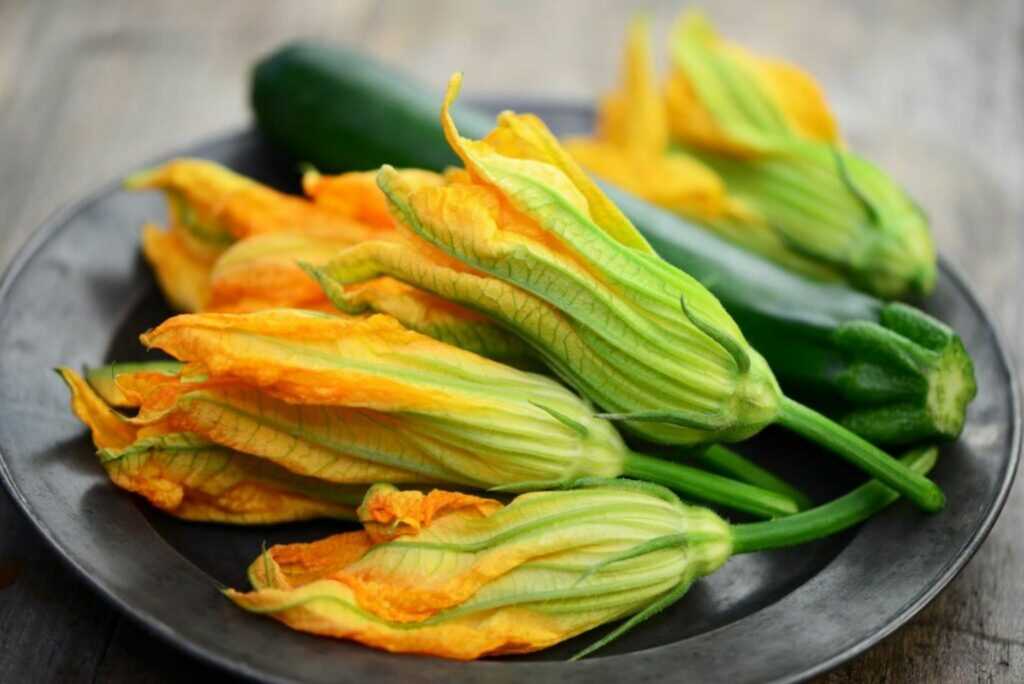

Companion planting refers to the practice of planting certain plants together to provide natural pest control or attract beneficial insects. For example, planting marigolds near your courgette plants can repel aphids and other pests. Other beneficial companions for courgettes include basil, dill, and nasturtiums.
3. Regular inspection
Regularly inspect your courgette plants for any signs of pests or diseases. Look for common pests like aphids, slugs, and caterpillars, as well as symptoms of diseases like powdery mildew or blight. Early detection can help prevent the spread of pests and diseases and allow for timely treatment.
4. Natural pest control
If you notice pests on your courgette plants, consider using natural pest control methods instead of chemical pesticides. These can include handpicking the pests, using organic insecticidal soaps or neem oil sprays, or attracting natural predators like ladybugs or lacewings to your garden.
5. Proper watering and fertilization
Keeping your courgette plants healthy and strong through proper watering and fertilization can also help them resist pests and diseases. Avoid overwatering, as this can lead to root rot and other issues. Additionally, provide a balanced fertilizer or compost to promote plant vigor and resilience.
By taking these steps to protect your courgette plants against pests and diseases, you can increase the chances of a bountiful and healthy harvest.
Implementing Companion Planting
Companion planting is a gardening technique that involves planting different crops together in order to benefit each other. By choosing the right companion plants for your courgettes, you can help improve their growth, deter pests, and maximize your harvest. Here are some tips for implementing companion planting in your vegetable garden:
1. Planting herbs
Herbs like basil, dill, and mint are great companions for courgettes. They not only repel pests such as aphids, cucumber beetles, and squash bugs, but also improve the flavor of the courgettes. Plant these herbs alongside your courgettes to create a healthy and flavorful garden.
2. Interplanting with flowers
Planting flowers like marigolds, nasturtiums, and sunflowers near your courgettes can attract beneficial insects such as ladybugs, lacewings, and bees. These insects help pollinate the flowers and also prey on common pests like aphids and caterpillars. Consider interplanting flowers with your courgettes to create a vibrant and pest-resistant garden.
3. Using companion plants as pest repellents
Some plants, like garlic, onions, and chives, have strong smells that repel pests. Planting these companion plants close to your courgettes can help deter pests and protect your crop. Additionally, planting beans or legumes near your courgettes can enrich the soil with nitrogen, which is beneficial for the growth of your plants.
4. Companion plants for shade
If your courgette plants are in partial shade, consider planting companion plants that can tolerate less sunlight. Lettuce, spinach, and other leafy greens are good choices for companion planting in shady areas. They can benefit from the shade provided by the courgettes while still receiving enough sunlight for their growth.
5. Crop rotation
Rotating your crops each year is an essential practice to prevent the build-up of pests and diseases in the soil. After harvesting your courgettes, consider planting a different vegetable in that spot the following year. This will help break the lifecycle of pests and diseases that can affect courgette plants.
By implementing companion planting techniques in your vegetable garden, you can create a healthy and harmonious growing environment for your courgettes. Experiment with different companion plants and see how they improve the overall health and productivity of your garden.
Applying Mulch and Regularly Weeding
One effective method for speeding up the courgette harvest is by applying mulch and regularly weeding the plants. This helps to create an optimal growing environment and reduce competition for nutrients and water.
Applying Mulch
Applying a layer of mulch around the base of the courgette plants has several benefits. Mulch helps to suppress weed growth, retain soil moisture, and regulate soil temperature. This creates a healthier and more favorable environment for courgette growth.
To apply mulch, start by removing any existing weeds or debris from around the plants. Then, spread a layer of organic mulch, such as straw or wood chips, around the base of the plants. Make sure to leave a small space around the stem to prevent rotting. The mulch should be approximately 2-3 inches thick.
Regularly Weeding
Weeding is crucial in maintaining the health and productivity of courgette plants. Weeds compete with courgettes for nutrients, water, and space, which can hinder their growth and reduce harvest yields.
To effectively control weeds, it is important to regularly inspect the courgette bed and remove any emerging weeds. This can be done by hand-pulling or using a gardening tool, such as a hoe or a hand cultivator. Be careful not to disturb the courgette plants while removing the weeds.
It is recommended to weed the courgette bed at least once a week to prevent weeds from becoming established and competing with the plants. Additionally, keeping the bed well-mulched will help to suppress weed growth and reduce the need for frequent weeding.
By applying mulch and regularly weeding, you can create an optimal growing environment for your courgette plants, promoting faster growth and ultimately speeding up the harvest. Take the time to maintain your courgette bed, and you will be rewarded with a bountiful crop of delicious courgettes.
Harvesting at the Right Time
Knowing when to harvest your courgettes is crucial to get the best flavor and texture. Harvesting at the right time ensures that your courgettes are not overripe or underripe, thus ensuring optimal taste and tender texture. Here are some tips on how to determine the right time to harvest your courgettes:
- Check for size – Harvest your courgettes when they are about 6-8 inches long. This is the ideal size for most varieties and ensures that the courgettes are still tender and not too seedy.
- Examine the color – Look for courgettes that have a shiny and vibrant skin color. Avoid courgettes that have a dull or discolored appearance, as they may be overripe or have a compromised flavor.
- Feel the texture – Gently press your finger against the skin of the courgette. It should have a firm but slightly yielding texture. Avoid courgettes that are too soft or mushy, as they may be overripe.
- Check the flower end – The flower end of the courgette should be firm and intact. If it feels soft or discolored, it may be a sign that the courgette is overripe.
It’s important to regularly check your courgette plants for ripe courgettes, as they can grow quickly, especially in warm weather. Harvesting at the right time ensures that you can enjoy the best flavor and quality from your homegrown courgettes.
“Question-Answer”
What are some tips for speeding up the courgette harvest?
Some tips for speeding up the courgette harvest include starting your seeds indoors, using black plastic mulch to warm the soil, providing adequate sunlight, using row covers to protect plants from cold temperatures, and using organic fertilizers to help plants grow faster.
How can starting seeds indoors help speed up the courgette harvest?
Starting seeds indoors allows you to get a head start on the growing season by providing optimal conditions for germination and early growth. By starting your courgette seeds indoors, you can transplant the seedlings into the garden once the weather and soil have warmed up, giving you a month’s head start on the harvest.
Why is black plastic mulch useful for speeding up the courgette harvest?
Black plastic mulch helps to warm up the soil, which is beneficial for courgette plants, as they prefer warm soil temperatures. By applying black plastic mulch to the soil in the garden bed, you can create a microclimate that is warmer than the surrounding soil, allowing the courgette plants to grow faster and produce fruit earlier.
What is the role of row covers in speeding up the courgette harvest?
Row covers are useful for protecting courgette plants from cold temperatures, which can slow down their growth. By using row covers, you can create a mini greenhouse effect, trapping heat and protecting the plants from frost. This can help to speed up the courgette harvest by allowing the plants to continue growing even when the weather is still cool.
How can organic fertilizers help speed up the courgette harvest?
Organic fertilizers provide essential nutrients to courgette plants, promoting healthy growth and faster development. By using organic fertilizers, you can ensure that your plants have everything they need to grow and produce fruit quickly. This can help to speed up the courgette harvest by encouraging faster growth and higher yields.







